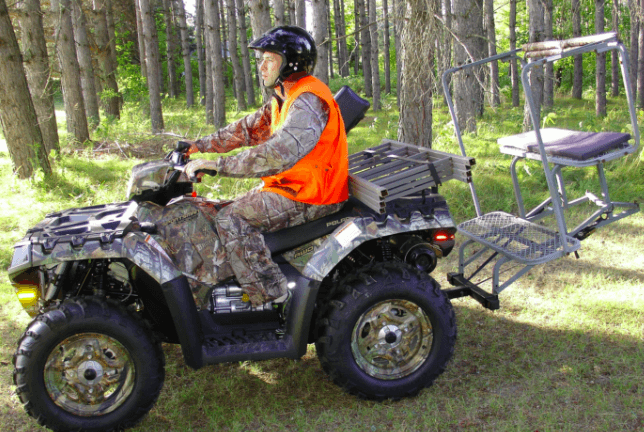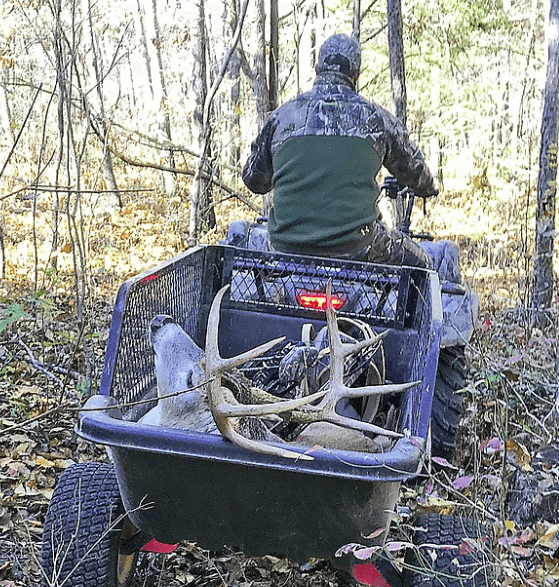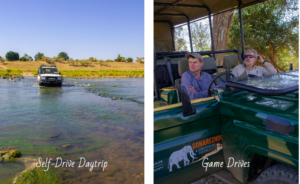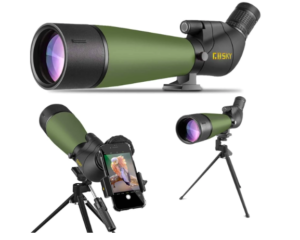
Hunting ATVs Pros And Cons Full Guide.
Hunting ATVs, or all-terrain vehicles, have transformed how hunters approach their outdoor activities. These tough and flexible off-road vehicles have proven to be indispensable companions for anyone seeking adventure in the bush. Hunting ATVs Just like Hunting Electric Bikes have evolved as crucial equipment for modern hunters, whether negotiating dense forests, traversing difficult terrain, or hauling animals and gear. We dig into the characteristics, perks, and considerations that make hunting ATVs an invaluable asset for both seasoned outdoorsmen and newbies to the world of hunting in our investigation of hunting ATVs.
What are the Pros and Cons Of Hunting ATVs?

Hunting ATVs, like any other piece of equipment, have advantages and disadvantages. Understanding these factors might assist you in making an educated decision about whether an ATV is the best option for your hunting needs. Here are some advantages and disadvantages of hunting ATVs:
Pros of Hunting ATVs:
Accessibility:
ATVs can reach isolated and harsh hunting areas that conventional vehicles may find difficult or impossible to reach. This improves your capacity to discover new hunting grounds.
Capacity for Transport:
Many hunting ATVs are equipped with racks and cargo capacity, making it easier to move hunting gear, game, and supplies. To increase capacity, certain variants can pull trailers.
Versatility:
Hunting ATVs may be modified for a variety of hunting uses, including deer and waterfowl hunting. They are also appropriate for all-year outdoor activities such as scouting, fishing, and camping.
Accessories and camouflage:
Some variants have camouflage patterns and hunting attachments like as rifle racks, bow holders, and winches.
Off-Road Potential:
ATVs are built to negotiate rough and uneven terrain while maintaining stability and traction in adverse situations.
Electric models have a quiet operation.
Electric hunting ATVs are quieter than gas-powered ATVs, which reduces noise nuisance in hunting regions.
Cons of Hunting ATVs

Environmental Impact:
ATV use may have a detrimental influence on the environment, including soil erosion, vegetation destruction, and wildlife habitat disruption. It is important to utilise ATVs ethically and in accordance with environmental standards.
Noise Pollution:
Traditional gas-powered ATVs may be rather noisy, potentially frightening away wildlife and bothering other hunters. Electric ATVs are quieter, however some noise may still be produced.
Safety Concerns:
ATVs may be harmful if not used properly. Accidents, rollovers, and injuries are possible, therefore it’s critical to follow safety requirements, wear protective gear, and get sufficient training.
Cost:
High-quality hunting ATVs can be costly, and the initial outlay may be prohibitive for some hunters.
Maintenance:
All-terrain vehicles require routine maintenance such as oil changes, brake inspections and tyre replacements. Maintenance expenditures might quickly pile up.
Regulations:
ATV laws and regulations differ by region, so it’s critical to be informed of local rules and limits. Violations of these restrictions may result in penalties or legal ramifications.
Passenger Capacity Is Limited:
Most ATVs are built for a single rider, which might be inconvenient if you hunt in a group or with your family.
To summarise, hunting ATVs can be useful tools for accessing isolated hunting regions and hauling equipment, but they have environmental, safety, and financial implications. To reduce the impact of ATVs on the environment and animals, it is critical to consider the merits and downsides, prioritise safety, and use them properly.
Best Hunting ATV Accessories To Buy.
The best hunting ATV accessories may improve your off-road experience, increase efficiency, and make your hunting excursions more convenient. Here are a few of the best hunting ATV accessories to consider:
Racks for firearms and bows:
Gun and bow racks or holders that are secure and conveniently accessible allow you to transport your guns or archery equipment safely.
Winch:
A winch may help you retrieve your ATV from difficult situations and is also useful for bringing game out of the woods.
Bags and Cargo Boxes:
Extra storage for gear, supplies, and game is provided by waterproof cargo crates, bags, or baskets.
Trailer and Hitch:
A trailer hitch and a utility trailer may be quite useful for transporting huge game or additional equipment.
Navigation and GPS systems:
A GPS gadget or smartphone mount with GPS capability can assist you in staying on track and marking hunting sites.
Decals and camouflage:
Camo wraps or decals can help you blend in with your surroundings and make your ATV less visible.
Compartments for storage:
Additional storage compartments or saddlebags might help you organise your needs.
Seat Covers and Heated Grips:
These gear will keep you warm on cold-weather hunts.
LED lighting bars
LED light bars with high output can increase visibility in low-light settings or when driving through dense woodlands.
First Aid Kit:
A well-stocked first aid pack is vital for safety in the event of an accident or injury while on your outdoor travels.
ATV Cover:
A robust cover built for your exact model will protect your ATV from the elements and dust.
Game Hoists:
Attachable game hoists or lifts make game processing and transportation easier.
Sound-Dampening Kits:
These upgrades can help to minimise engine and exhaust noise, which is very important for silent hunting.
Hand and Thumb Warmers:
Heated grips and thumb warmers will keep your hands warm on chilly hunts.
Portable GPS Mapping Device:
A portable GPS unit with mapping features can assist you in navigating unknown terrain and marking hunting spots.
Accessories for ATV Winches:
For further adaptability, consider additional winch attachments such as tree savers, snatch blocks, and synthetic winch ropes.
Tree Support and Bow Holder:
A tree stand attachment and a sturdy bow holder may be quite useful for bowhunters.
Security Measures:
Protect your ATV from theft by installing anti-theft gadgets such as wheel locks and security wires.
It is critical to choose ATV accessories for hunting that are appropriate for your hunting style, terrain, and climate circumstances. Also, be sure that any changes or attachments adhere to local hunting and ATV restrictions. Accessories that are properly fitted and maintained may substantially improve your hunting experience and make your ATV an even more important tool in the outdoors.
How To Maintain A Hunting ATV Full Guide.

Maintaining your hunting ATV is critical to ensure that it operates dependably and securely throughout your hunting excursions. Proper maintenance can also help your ATV last longer and lessen the likelihood of failures in the field. Here’s a detailed guide on maintaining your hunting ATV:
Regular Maintenance Schedule:
Examine the Owner’s Manual:
Read over the owner’s manual that came with your ATV. It includes important maintenance information particular to your model.
Maintenance Calendar:
Make a maintenance calendar or timetable to guarantee that routine checks and services are completed on time. Depending on your ATV’s odometer or hour metre, keep note of dates, distance, or hours of operation.
Pre-Ride Inspection:
Perform a pre-ride check before each hunting trip:
- Tyres: Inspect the tyres for signs of damage or excessive wear. Tyres should be inflated to the manufacturer’s specifications.
- Brakes: Check the front and rear brakes to check they are operating properly.
- Lights: Check that all lights, including headlights and taillights, are working properly.
- Check the levels of engine oil, gearbox fluid (if applicable) and brake fluid. Top up or replace fluids as needed.
- Controls: Make that the throttle, brakes, and steering are quick and smooth.
- Suspension: Check the suspension for leaks, corrosion, or loose parts.
Tasks for Regular Maintenance:
Perform the following maintenance chores on a regular basis:
- Oil Change: Replace the engine oil and oil filter as directed by the manufacturer. Oil changes are essential for engine life.
- Air Filter: Clean or replace the air filter as needed to keep the engine running smoothly.
- Spark Plug: Replace the spark plug at the period suggested by your ATV.
- Coolant (if applicable): Check and maintain the coolant level, and replenish it as needed according to the manufacturer’s instructions.
- Grease all grease points, including suspension components, steering linkage, and wheel bearings.
- Battery: Clean the terminals and inspect the general condition of the battery. If necessary, charge or replace the battery.
- Inspect the exhaust system for leaks, loose nuts, and damage.
- Examine the CV joints and boots for wear or damage, and repair them as needed.
- Brake Pads: Inspect the brake pads for wear and replace them when the minimum thickness is reached.
- Chain (if applicable): Lubricate and adjust the chain tension according to the manufacturer’s recommendations.
- If you want to keep the ATV for a lengthy period of time, use a fuel stabiliser and follow suitable storage measures.
- Inspect the wheels and hubs for any loose or broken components, and tighten or replace them as needed.
Off-Season Storage and Maintenance:
- Cleaning: After each hunting trip, thoroughly clean your ATV to eliminate dirt, debris, and impurities that might cause corrosion.
- Storage: Keep your ATV in a dry, covered place during the off-season. Consider using a cover to keep dust and moisture out.
- Fuel: Use a fuel stabiliser and operate the engine to ensure stabilised fuel enters the carburetor or fuel injection system if storing for a long length of time.
- Battery Maintenance: To avoid discharge during lengthy periods of inactivity, disconnect the battery or use a battery maintainer.
- Review Owner’s handbook: Before each new season, go over your owner’s handbook to see if there are any special maintenance or preparation tasks that the manufacturer recommends.
Additional Tips:
Always use the fluids and parts indicated in the owner’s handbook.
Keep a maintenance record to keep track of all ATV servicing and repairs.
If you are not comfortable conducting maintenance duties, get a trained ATV technician or dealer to do so.
To avoid future damage, be proactive with repairs and address concerns as soon as possible.
You can guarantee that your hunting ATV is dependable and safe for your outdoor excursions by following our detailed guide to maintaining it.
Regular maintenance not only improves the performance of your ATV but also makes hunting more pleasurable and trouble-free.
FAQs About Hunting ATVs
Is insurance required for my hunting ATV?
While insurance needs differ, having ATV insurance to protect yourself and your investment is a wise idea. Check with your insurance provider for off-road vehicle coverage alternatives.
Can I ride my hunting ATV with a firearm?
Many countries allow you to travel weapons on an ATV, but it’s critical to obey local firearm transportation rules and store firearms carefully to avoid mishaps.
How do I transport game on a hunting ATV?
Using racks or cargo space, you may transport game on a hunting ATV. Some ATVs include game bags or baskets specifically designed for this purpose.
Is there an age limit for operating a hunting ATV?
There are age limitations in many places for using ATVs. Check local restrictions, but in general, minors must be a specific age and complete licencing requirements before operating an ATV.
What should I do if my ATV breaks down if I have an emergency while hunting?
Carry a communication device (cell phone or satellite phone) to call for assistance if necessary. It’s also a good idea to have basic tools and replacement parts on hand for simple repairs, as well as to notify someone of your hunting position and projected return time.
Are there any limits on ATV hunting on public lands?
ATV usage for hunting is frequently prohibited on public grounds. For rules and authorised ATV routes, contact the controlling agency (e.g., the US Forest Service or a state wildlife agency).
Can I just use my hunting ATV only during hunting season?
A hunting ATV may be used for a variety of outdoor activities all year. In addition to hunting, many hunters utilise their ATVs for scouting, trail riding, and other leisure activities.
What is the average fuel economy of a hunting ATV?
Fuel economy varies based on the type and model of the ATV, engine size, and how it is ridden. ATVs fuelled by petrol generally obtain 15 to 30 miles per gallon (MPG).
Can I legally ride my hunting ATV on roads and highways?
The laws governing the usage of ATVs on public roads and highways differ by jurisdiction. ATVs are not permitted on the road in many areas, however certain states and regions may allow restricted road use. Always double-check local laws.
Is there any federal legislation concerning hunting ATVs?
While there are no federal regulations governing the use of ATVs for hunting, federal land agencies may have rules and limits governing ATV use on public lands. When hunting on federal property, it is critical to follow these restrictions.
During the off-season, how do I maintain and store my hunting ATV?
Cleaning, lubricating, and storing the ATV in a dry, secure spot are all part of proper maintenance.
Related






